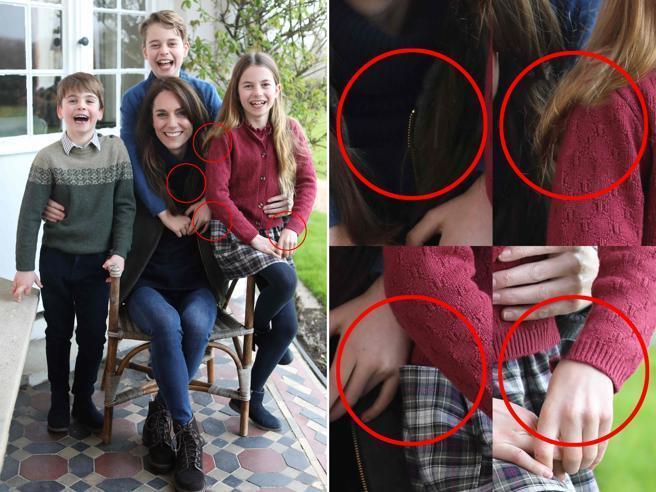The recent circulation of a retouched photograph of Princess Kate Middleton has shaken the world of information and raised questions about how much we can trust the images that surround us, even when they come from official sources.
The case has highlighted a surprising vulnerability even among the most scrutinized public figures, underscoring the importance of transparency and authenticity in the digital era.
The incriminated photograph, originally released by Kensington Palace, underwent multiple digital alterations before being shared with the public. The episode has raised questions about the chain of control and the responsibility of institutions in ensuring the integrity of the images disseminated by the Royal Family.

Does the Royal Family lose credibility and trust with an edited photo?
The retouched photo depicting Princess Kate Middleton with her children not only raises questions about ethics and transparency in journalism and communication but also highlights a harsh reality: even institutions that typically embody authority, integrity, and truth act in ways that can undermine public trust.
Usually, the Royal Family is seen as a beacon of reliability, a reference point for authenticity and integrity. The fact that they, too, have disseminated a retouched photograph underscores how misinformation can penetrate even the most respected and monitored institutions.
The Kate Middleton case not only calls into question the responsibility of institutions in ensuring transparency and truth but also emphasizes the need for greater awareness and vigilance on the part of the public. The alarm about misinformation spares no one and requires collective commitment to defend the authenticity of information and public image.
Retouched photos: how to ensure reliability in digital content?
In this context, it becomes imperative for any organization to ensure data security, certify the authenticity of the content it acquires and shares, in order to inspire trust and transparency. How?
- Authenticity verification directly from the source: committing to using only authentic data acquired through secure methods to ensure transparency in information and digital processes.
- Strict adherence to data security standards: following data processing standards meticulously, avoiding manipulations that could compromise the reliability and credibility of content.
- Careful management of data sharing: safely managing owned data and content, especially when shared internally or externally to the organization, to maintain high trust and reliability.
The lesson from the Royal Family: preserving authenticity in the digital era
This episode, involving the Royal Family as a protagonist in misinformation and content manipulation, reminds us of the fragility of the digital image, emphasizing the importance of transparency and authenticity in communication.
Only by adopting secure, compliant, and reliable practices can we preserve people’s trust and maintain the authenticity of the information as well as the online content we consume daily.
About TrueScreen
TrueScreen is the leading cybersecurity company specializing in the acquisition, signing, and management of data with legal and evidentiary value.
TrueScreen’s mission is to restore trust in digital information by providing proprietary technologies to combat fraud, disputes, and misinformation.
Through the forensic and legally valid acquisition of multimedia content, document signing, and the certification of online data and communications, TrueScreen provides businesses, professionals, and individuals with secure and efficient management of information flows.
TrueScreen is used by multinational corporations, system integrators, consulting firms, and public administrations to ensure authentic and tamper-proof information, improve process efficiency (reducing implementation time and costs), and ensure full compliance with international regulations on data acquisition and processing.
TrueScreen’s proprietary technology is available as a SaaS (Software-as-a-Service) solution through mobile applications, web services, or easily integrable APIs/SDKs for third-party software.
Learn more about TrueScreen at www.truescreen.io.





